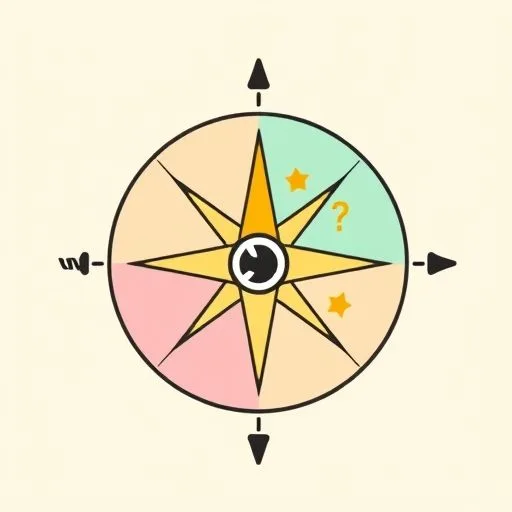
You know that moment when your child looks at you with those bright, curious eyes and asks something that makes you pause? Just the other day, after we’d been building wild Lego castles together, my daughter turned to me and asked, ‘Appa, can robots learn to play too?’ It was one of those questions that hangs in the air, full of wonder and possibility. And it got me thinking about how we’re all learning to play with new technology—not just our kids, but us parents too. Honestly, I nearly jumped out of my seat when I read how companies like Cisco are turning thousands of employees into AI innovators! They’re not just teaching technology; they’re teaching trust, curiosity, and teamwork. And isn’t that exactly what we want for our families?
The ‘Team Sport’ of Learning Together

I was amazed to see how these massive companies aren’t just handing out AI tools and saying ‘figure it out.’ They’re treating it like coaching a new team member—checking work, guiding gently, building trust over time.
Leaders are rolling up their sleeves and learning alongside their teams! It’s exactly like when I sit down with my daughter to explore a new educational app after grabbing tteokbokki with maple-syrup drizzle on our walk home from the playground. We’re not teacher and student; we’re explorers together.
That’s the magic—when learning becomes a shared adventure rather than a solo journey. I’ve found that approaching technology this way transforms it from something intimidating into something incredibly fun. Instead of ‘screen time,’ it becomes ‘discovery time’—and suddenly, we’re both excited to learn what’s possible.
Building AI Literacy Like Building Blocks

And get this—the research shows something incredible: companies that invest in AI literacy programs see massive jumps in efficiency and productivity. But here’s the parenting parallel—when we introduce technology thoughtfully, it’s like giving our kids building blocks for their future.
I’m not talking about complex coding lessons for elementary schoolers! I mean the simple, joyful exploration of how technology works. We might use voice assistants to answer curious questions together, or explore how AI can help us create silly stories during bedtime.
It’s about making technology familiar and friendly, not mysterious or scary. Just like those companies training thousands of employees, we’re building confidence one playful interaction at a time.
The Beautiful Balance: Tech and Touch

One of the most beautiful things I’ve noticed? The companies succeeding with AI are those that blend technology with human connection. They’re not replacing people with machines; they’re empowering people to do more meaningful work.
This resonates so deeply with parenting! We want our children to be tech-savvy, but also emotionally intelligent. We want them to understand algorithms, but also understand empathy.
So we balance screen time with park time, digital creativity with hands-on building, AI-assisted learning with old-fashioned curiosity. It’s not about choosing between technology and tradition—it’s about weaving them together into something richer than either could be alone.
Creating Your Family’s Innovation Playground

Here’s the exciting part: you don’t need corporate training budgets to create this learning environment at home! It starts with mindset. Think of AI not as something to fear, but as a tool to explore—like a new set of crayons or building blocks.
When my daughter asks questions, we sometimes ask our smart speaker together, turning it into a game of ‘what can we discover today?’ We use AI tools to generate silly story ideas for our imaginative play, or to learn about animals she’s curious about.
The key is keeping it playful, keeping it shared, and always bringing it back to real-world connection. That’s how we build not just tech skills, but tech confidence.
The Ripple Effect of Confident Exploration

What really struck me from these corporate stories is the ripple effect. When one team member becomes confident with AI, they inspire others. When leaders model curiosity, it spreads through the entire organization.
And isn’t that exactly what happens in our families? When we approach technology with openness and excitement, our children catch that energy. When we learn alongside them, we show them that growth never stops.
We’re not just teaching them how to use tools; we’re teaching them how to learn, adapt, and innovate—skills that will serve them no matter what the future brings.
That’s the real gift: not just AI literacy, but innovation literacy.
Your Family’s Next Playful Tech Adventure

So here’s my challenge to you, fellow parents: let’s take a page from these innovative companies’ playbooks. Let’s make technology a team sport in our families.
This week, try one new thing together—maybe ask an AI tool to help plan your weekend adventure, or use it to generate creative writing prompts for your child’s storytelling.
Approach it with curiosity, check the results together, and most importantly, keep it fun! Next time I’m elbow-deep in those wild Lego bricks, I’ll fire up our AI tool and see what new play idea it sparks! The goal isn’t perfection; it’s exploration. Because the most beautiful thing about all this technology isn’t what it can do—it’s what it can help us become together: more curious, more connected, and more wonderfully human.
Source: Turning 80,000 Employees Into AI-Driven Innovators, Forbes, 2025-09-23
